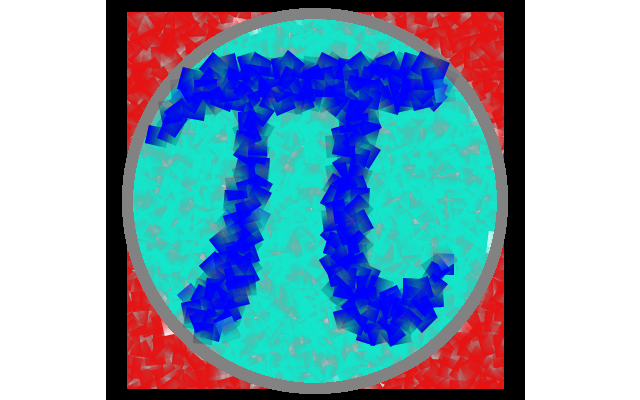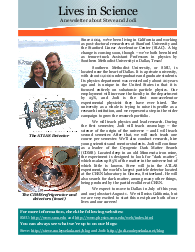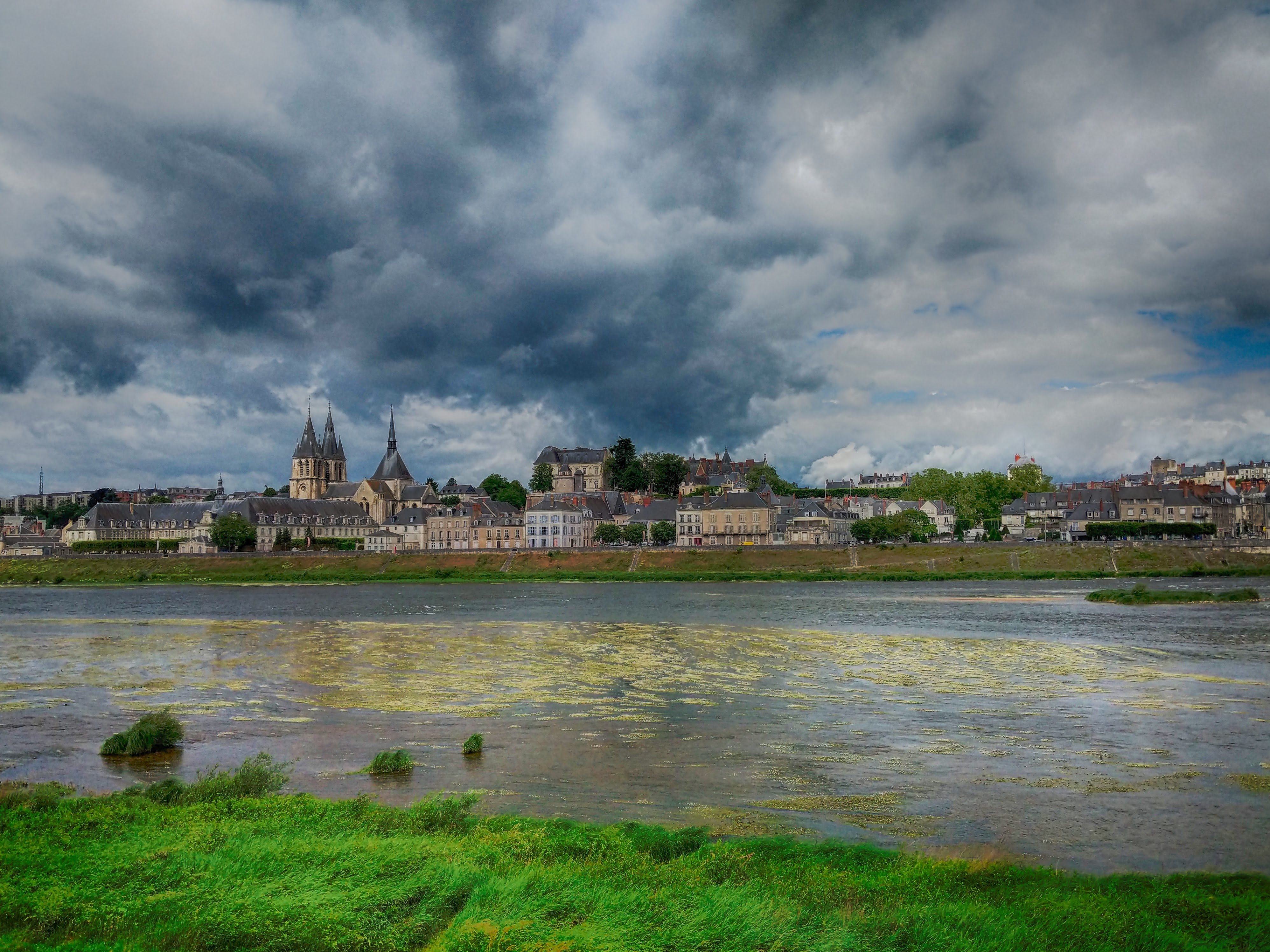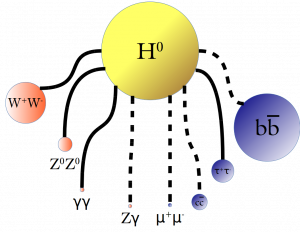
In our book, “Reality in the Shadows,” Jim Gates, Frank Blitzer, and I take a look at the history of the Higgs particle, see the day the discovery was announced through the eyes of one of the co-authors (me), and explore what the Higgs might be besides being just another important subatomic particle.
In some future edition of the book, we can perhaps speak more definitively about the Higgs boson and the ultimate place it will take in the pantheon of human knowledge. For now, a 20-year (or longer) program of study is underway, initiated in 2012 and 2013, to map out all the properties of this fascinating particle. Discovering something is the first step. Now we must explore what we have found.
The Higgs is still veiled in shadow. We don’t know all its properties as precisely as we would like, and many we do not know at all. Could something new lurk in those unexplored crevasses of its nature? In this post, I’ll take you inside one of the shadows where light is beginning to shine, and we’ll see something of the truth and beauty of the Higgs boson.

My focus right now on my experiment, ATLAS, is to measure the Higgs and its interaction with a very specific quark: the bottom quark (once also known alternatively as the “beauty quark”). The bottom quark has a mass approximately 4-5 times that of the proton, but so far as we know the bottom quark is not divisible into other kinds of matter (it’s not made of anything). It has a little, irreducible chunk of internal momentum called “spin”, set to a value of one-half of a number called “Planck’s Reduced Constant“. Because it’s the second-heaviest quark, the Higgs boson should interact with it a lot. But it’s challenging to see this interaction directly, because so many other processes that occur in nature resemble its signature in an experiment. You can get faked-out easily. It takes hard work, time, creativity, and patience to observe this interaction – if it exists at all.
Much of the writing of the book was completed earlier in this year. For me, the bulk of this year was spent focusing on my research. Working with an excellent team of physicists on the ATLAS experiment, together we saw a direct glimpse of the Higgs-bottom quark interaction process over the summer… just a strong hint. However, if we are dedicated and clever enough, and if this hint is real, then confirmation of this process – absolute discovery of its existence – should be within our grasp within 2 years.
What’s exciting about this is this is only the second time we would have witnessed the Higgs boson interact with a particle carrying one-half unit of spin momentum. Previously we had only seen the Higgs interact like this with a much lighter and more distance cousin of the bottom quark, a particle called the “tau lepton.”
When I originally composed the draft chapters on the Higgs boson in “Reality in the Shadows,” the interaction with the bottom quark had been strongly hinted at by indirect methods but this independent direct evidence did not yet exist. Scientific knowledge is a living thing, evolving as we refine our understanding of the cosmos through the practice of science.
What’s even more amazing was what happened next. Science sometimes moves faster than you think it can.
Just a month ago, a separate team of physicists from within the 2500-person ATLAS Experiment announced very strong evidence for the interaction of the Higgs quark directly with top quarks. This, too, had been glimpsed previously by indirect means but this was the first time the Higgs had been directly seen to be produced in a process that also made top quarks. To see both the bottom and the top quark interactions… or, at least, evidence for these processes… in the same year has been extremely rewarding.

Top quarks are the heaviest particle known (and once there was the hope of renaming the quark “truth” instead of “top,” but “top” is the winner). They have a mass about 170 times that of the proton, equivalent to the mass of a gold atom… but all bound up in a fundamental particle. The top quark is in some ways easier to work with than the bottom, but due to the energy required to make it it’s even harder to glimpse than the bottom-quark process I work on. To have seen it was well as the ATLAS team did is a remarkable achievement, a real tour-de-force measurement.
This measurement awaits confirmation. While our friends on the CMS Experiment have their own results on the bottom quark and Higgs interaction (they see what we saw, so there is some confirmation for now), the community awaits the CMS results on the top quark and Higgs interaction measurement. ATLAS and CMS have only been using a fraction of the data available to do these studies, because it takes so long to do them. We take data faster than we can analyze it reliably. And the data we have now, much of it still un-analyzed, will end up being only about 2/3 of what we’ll have by the end of next year (2018).
Over the past months, we’ve seen more light shed on the Higgs particle. What is illuminated is a picture still consistent with the expectations of the standard model, the overarching model of nature that predicted the existence of the Higgs particle in the first place. Will the Higgs be a portal to a new landscape, some great continent beyond the standard model? We explore this in “What the Heck’s the Higgs – Part 2,” a later chapter of the book. Only time and research will tell. For now, what lies beyond the Higgs is still shrouded in a veil of shadow that no particle collider has yet penetrated.
About “Reality in the Shadows”
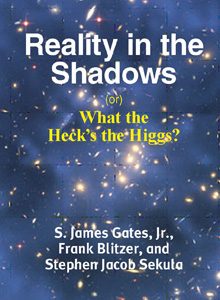
“Reality in the Shadows (or) What the Heck’s the Higgs” by S. James Gates Jr., Frank Blitzer, and Stephen Jacob Sekula. Available from Amazon.com, Barnes and Noble, and YBK Publishers. $26.95.
Description:
In recent years, we have learned that the commonplace materials described by the scientific findings we have so far discovered portray but a tiny piece of a much greater universe–a universe ruled by vast mysteries that appear to shape reality at both its largest and smallest sizes. That universe is now coming to be better understood. You will see how this has happened and how the shadows in the unknown slowly continue to be lit and identified.
Reality in the Shadows is a chronicle of the men and women who cast light on these mysteries of our existence, a look into some of the brilliant ideas that they presented, and a longer look at the new and even greater mysteries of the cosmos that now cry for scientific explanation. It is also an opportunity to become familiar with a now-famous particle– the Higgs Boson–that is both a telling-out of some very old questions and the beginning for hundreds of new and yet-to-be-answered ones.
This book is written for the lay person–someone very interested in this subject, who may not have had a lot of technical preparation. It was prepared to make the material as engagingly easy to read as possible and provides many analogies and explanations.

